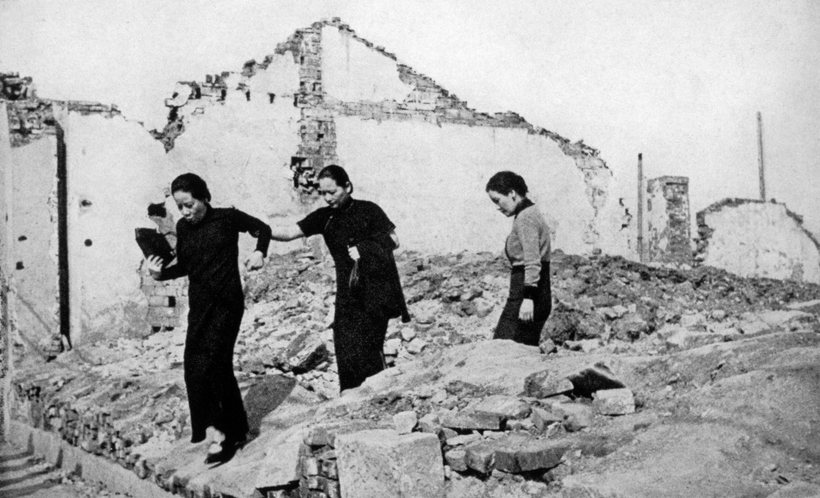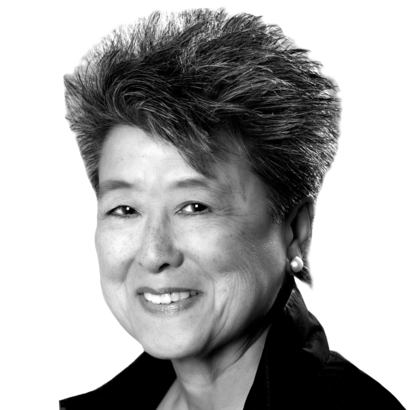What more can be revealed about the Soong sisters’ fabled and much chronicled lives, etched in the public memory by the adage “Once upon a time in distant China, there were three sisters—one loved money, one loved power, and one loved her country”? Their stories, and those of the other historic figures in their rarefied orbit, have been the subject of numerous books, dissertations, documentaries, melodramas, and every manner of cultural exploration, including, in 2006, a biography of Soong May-ling, also known as Madame Chiang Kai-shek (the one who loved power).
In the hands of master storyteller and contrarian Jung Chang, the old tale finds a new interpretation by one who knows well the intricacies of family, influence, gender, and power in modern China. Through letters, archives, and earlier research, Chang traces the inner lives of Big Sister Ei-ling (born 1889), who “loved money” and married a wealthy financier; Red Sister Ching-ling (born 1893), who “loved her country” and married Sun Yat-sen, the “father of modern China”; and Little Sister May-ling (born 1898), who married Chiang Kai-shek, the leader of the Republic of China.
Modern Family
At the end of the 19th century, when the Industrial Revolution had catapulted Great Britain and the U.S. into world domination through “gunboat diplomacy” that hastened the fall of dynastic China, the sisters were born into one of the most Westernized families in China. Their parents were ardent Christians: their mother was from one of the most established Christian families of Shanghai, and their father, Charlie Soong, had been trained in the United States to be a Methodist missionary. Soon after returning to China, Charlie eschewed missionary life to start a printing business, making his fortune printing Bibles—and becoming an ardent supporter of Dr. Sun Yat-sen, the mythic figure revered for his relentless quest to build a Chinese republic and whom Charlie’s middle daughter would later marry.
It was the parents’ wish to send their daughters, as well as their three sons, to American schools. (Educating daughters was an unusual extravagance in those days.) After attending a Methodist boarding school in Shanghai, 14-year-old Ei-ling was sent to Macon, Georgia, to attend Wesleyan College—the first school in the world to grant degrees to women. Her sisters joined her a few years later; May-ling was sent to America at the age of 9, staying to attend college at Wellesley and not returning to China until she was 20.
One loved money, one loved power, and one loved her country.
Chang marks their growth into independent-minded young women with revealing anecdotes: Ei-ling was introspective and self-sufficient; Ching-ling sensitive, compassionate; May-ling, an extrovert. When immigration officers in San Francisco refused to admit Ei-ling into the U.S. after the long journey and threatened to detain her, the proud and uncowed teenager fired back, “You cannot put me in a detention home. I am a cabin-class passenger, not from steerage.”
The sisters’ lives, however, are told largely in relationship to the powerful men with whom they were associated. Perhaps that is to be expected, especially considering the times and the stature of those men. But Chang also steers her gaze at attributes and values that a woman might note. For example, she doesn’t hesitate to show the unseemly side of Sun Yat-sen, whose “Three Principles of the People” were modeled after Abraham Lincoln’s Gettysburg Address—“government of the people, by the people, for the people.”
“I am a cabin-class passenger, not from steerage.”
When 23-year-old Ei-ling volunteered to work for him as his English-language assistant, the 46-year-old Sun openly lusted for her, telling an American adviser that he wanted to marry her. When the adviser pointed out that he was already married, Sun said no problem, he’d divorce his wife. (Sun not only spurned his wife; he also ignored the needs of his mother, children, concubine, and his brother who cared for them all, as he pursued his ambition to become the president of China.)

According to Chang, “The smart young lady [Ei-ling] handled Sun’s advances deftly, keeping him at arm’s length while managing to work with him.” In the meantime, Ei-ling was introduced to H. H. Kung, a wealthy young widower who had graduated from Oberlin and Yale. “They soon fell for each other,” sharing similar backgrounds of wealth, American educations, and political misgivings about Sun’s radical revolution. Soon after they wed, Chang writes, H.H. “went into business and with her help became very rich.”
Thick as Thieves
Indeed, H. H. Kung would become one of the richest men in the world, eventually amassing a fortune that many believe was siphoned from the Chinese treasury and through speculative hoarding of international humanitarian aid intended for the destitute, to be sold at exorbitant prices—with Ei-ling’s help. The author presents some of the rumors about the Kungs’ fabulous wealth and Ei-ling’s corruption, and she quotes President Harry Truman on “Chiang and the Madame, and the Soong and Kung families: They’re all thieves, every damn one of them.” Yet Chang doesn’t use her considerable voice to render judgment on Ei-ling and the Kung family the way she does on Sun Yat-sen.
Nor does Chang hold back in her critique of Red Sister Ching-ling. With Sun in need of a new assistant after Ei-ling’s marriage, the “younger and prettier” Ching-ling took her sister’s place. Against the vehement opposition of her parents, Ching-ling married Sun, and together they spent the next 10 years fighting for the republican revolution. With Sun’s death in 1925, she becomes Madame Sun Yat-sen, widow of the “Father of the Nation.” Chang charts her evolution from a hero-worshipping young woman to the committed Communist who was often used and manipulated by Moscow, the Comintern, and her fellow Chinese revolutionaries. Madame Sun, according to Chang, uses them, too—to protect and maintain her elevated status as the widow of Sun Yat-sen.
Much of the book deals with May-ling and her husband, Generalissimo Chiang Kai-shek: her glamour-filled life, his rise to power, and their trials and tribulations through world war, revolution, and life in exile. These are well-trod subjects, but Chang’s telling of history holds some surprises—for example, that Chiang Kai-shek could have annihilated the Communist army but spared Mao and his troops as a bargaining chip with Stalin to get his son and successor, Ching-kuo, out of Moscow. For this and other such historical questions, citations are often to Chang’s own book on Mao, pointing to entire chapters, or even several chapters—virtually unsearchable by curious readers.
Blame It on the Hives
One wishes that the book probed into other well-known, significant events. Absent is any direct mention of the 1927 “White Terror” in Shanghai and elsewhere, when Chiang Kai-shek exterminated thousands of left-wing and Communist members of his own party in a wave of violence. May-ling and Chiang were married in Shanghai just a few months after, yet there is nothing to indicate that May-ling, her “brilliant” sister Ei-ling, or her Christian family took note of the bloodbath that propelled Chiang into power.
Similarly, May-ling’s severe hives are often mentioned to explain why she was so demanding at the Roosevelt White House—but not how she antagonized staff by snapping her fingers to call for servants. Eleanor Roosevelt, after asking May-ling how a vexing labor-union strike would be handled in China, recounted that Madame Chiang simply drew a manicured fingernail menacingly across her throat. About May-ling’s well-documented, intense “friendship” with Wendell Willkie, a 1940 contender for the U.S. presidency, Chang writes one paragraph, ending with the parenthetical: “There is no evidence they had an affair, as some have claimed.”
When Eleanor Roosevelt asked how a labor-union strike would be handled, Madame Chiang drew a finger across her throat.
Chang has been a passionate critic of Communist China’s dogmatic telling of history ever since her spellbinding 1991 memoir, Wild Swans, exposed the dangers of ideological indoctrination. Mao: The Unknown Story declared him to be worse than Hitler and Stalin, while Empress Dowager Cixi took a contrarian view of the much-reviled empress. In this context, it’s not surprising that Chang would apply a harsher look at the revered Suns and a gentler view of the Chiangs and Kungs. Once again, Jung Chang has written a provocative view of the historical times that produced these extraordinary sisters, and a very personal window into a family that wielded incredible global influence during the most tumultuous period of the 20th century.
Helen Zia is the author of Last Boat Out of Shanghai: The Epic Story of the Chinese Who Fled Mao’s Revolution


